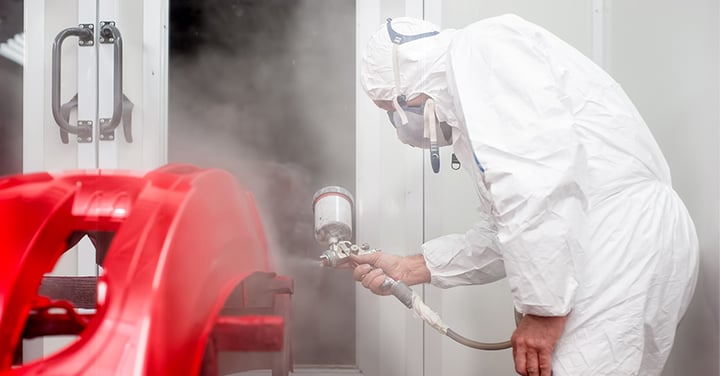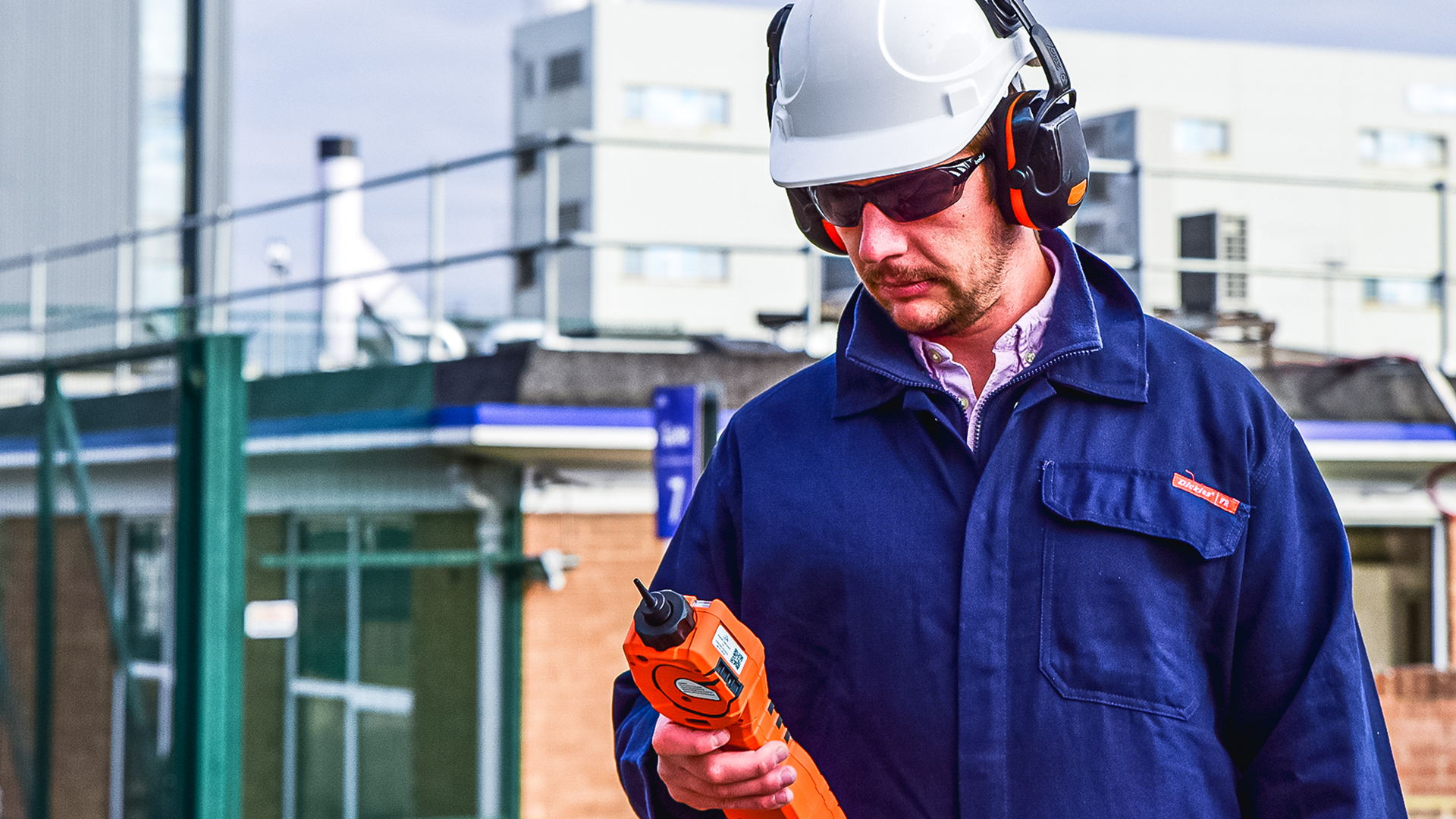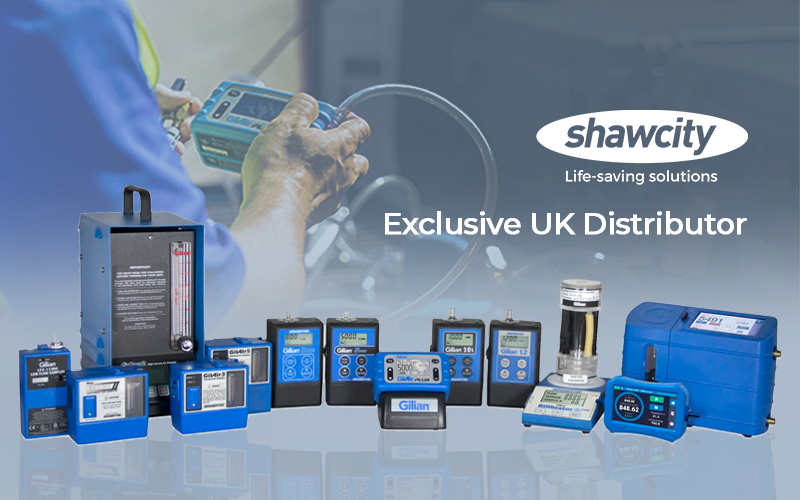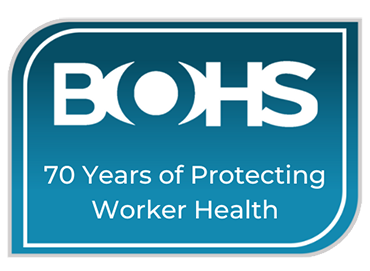Volatile organic compounds (VOCs) are increasingly making the headlines, but what exactly are they and what effect do they have on the workplace as well as everyday life?
What is a VOC?
The term VOC includes a wide range of naturally and synthetically occurring chemicals that are found almost everywhere on the planet. They are described as volatile because they evaporate at standard temperature and pressure, releasing molecules into the atmosphere. Some VOCs have little or no known effect on humans, while others have been proven to cause adverse short- and long-term health effects.
Frequently used in industrial processes, examples of VOCs can include benzene from fuel or formaldehyde evaporating from paint. Formaldehyde is one of the most common VOCs, a colourless gas with a sharp smell. It is also common in building materials like plywood, particle boards and glue.
VOCs can be extremely useful as they form the building blocks of many synthetic materials (plastics, rubbers, glues, paints, etc.) and are used in pharmaceutical, transport and heating processes. They may also be encountered in domestic or commercial indoor environments, through emissions from household cleaning products, pesticides, building materials or even office equipment such as copiers and printers.
Whilst many VOCs have a minimal adverse impact on health and the environment, some are harmful. Health effects include eye, nose, and throat irritation and sometimes more serious symptoms from short term (acute) exposures. Long-term (chronic) exposure to very low concentrations undetectable by human senses (parts per billion) may cause damage to the liver, kidneys or central nervous system, as well as cancers.
Sources of VOCs
Significant sources of VOCs in industry are processes which create or use solvents, paints or use chemicals. Others include petrol refining, fuel storage and the manufacturing industry for products, including: Industrial machinery, vehicles and transport equipment; iron, steel and other metals; chemicals; wood; plastic; paper; cement, lime and plaster; ceramics; oil, fat, petroleum and coal; glass; leather; textiles and woven fabrics; electrical equipment and appliances; and food preparation.
Domestic and light industrial sources of VOCs also include exposure to building materials, furniture, carpets, heating and cooking systems, stored solvents and cleaning products.
Common VOCs often found in domestic and leisure vicinities include:
-
Benzene – Paint, glue, carpeting & emissions from petrol combustion.
- Formaldehyde – Floor lacquers & some moulded plastics.
- Toluene – Paint, inks, dyes & perfumes.
- Carbon disulphide – Chlorinated water.
- Acetone – Nail polish remover, furniture polish & wallpaper.
- Dichlorobenzene – Deodorisers.
- Xylene – Traffic emissions & idling cars.
- Butanal – Emissions from barbecues, burning candles, stoves & cigarettes.
- Ethanol – Glass cleaner, dishwasher tablets & laundry detergents.
- Terpenes – Fragrant products such as soap & laundry detergents.

Generally, VOCs are released slowly from these sources and tend not cause a problem. However, modern buildings have low air exchange rates (to reduce heating and air conditioning costs) therefore concentrations can much more easily rise to harmful levels.
The simplest and most effective way of reducing exposure to VOCs in the home or office is to remove the product altogether, reduce the amount used, or source alternative products which do not contain VOCs.
Environmental Issues
Air pollution is now something we are all aware of and is often included alongside UV levels on weather forecasts. VOCs are themselves directly an air pollutant but also have secondary effects.
When sunlight and heat react with VOCs - specifically sulphur dioxide and nitrogen oxides, which can be released from many industrial processes as well as motor vehicles - ozone is generated, and smog is formed.
The individual components of smog can compromise human health and harm the environment – mixed they form a deadly cocktail. Smog can cause or aggravate health problems such as asthma, emphysema, chronic bronchitis, and other respiratory problems. The ozone in the smog also inhibits plant growth and can cause widespread damage to forests and crops.
But VOCs are not just present in the air. They can also be found in our wastewater as well as contaminating land. Most contamination found in our water systems is from industrial wastewater and studies have found up to 46 ppm around manhole covers of VOCs including benzene, toluene, ethylbenzene, xylene (BTEX) and tetrachloroethane.
The two most common environmental locations to find VOCs is brownfield sites - where industry has left contaminated land - and historic or disused landfill sites. A site of a former petrol station, where there will be underground storage tanks and potential seepage into the surrounding soil over time, is a good example.
Removal of these harmful VOCs can be achieved by cleaning the soil, known as soil remediation. While the process is expensive, this service achieves a high success rate of clearing land of contaminants and preparing it for another use in the future, including commercial and domestic purposes.
Domestic and Office-based VOC issues
As VOCs exist as a gas at room temperature, the main exposure route is through breathing. Exposure to harmful VOCs can happen at home, outdoors, or in the workplace.

Some sources of VOCs in a domestic and light industrial setting include building materials, furniture, carpets, heating and cooking systems, stored solvents, and cleaning products. Generally, VOCs are released slowly from these sources giving off low levels and would not cause a problem. However, modern buildings have low air exchange rates which can cause concentrations to easily rise to harmful levels.
VOCs are now widely recognized as a major contributor to sick building syndrome (SBS) which in turn compromises indoor air quality (IAQ). According to the NHS, symptoms of SBS include: headaches; blocked or runny nose; dry, itchy skin; dry, sore eyes or throat; coughing or wheezing; rashes; tiredness; and difficulty concentrating. These symptoms are common and statistically unlikely to be a sign of SBS, but if there is a potential issue the workplace manager or building landlord can investigate.
Research has shown that people spend approximately 90% of their time indoors. Consequently, for many individuals, the risks to health may be greater due to air pollution exposure from indoors rather than outside.
Industrial VOC issues
VOC gases are found in almost every industry. Typically, in heavier industries including steel foundries and refineries, the concentrations of VOCs are higher. In these types of applications, VOCs can pose additional threats. For example, some VOC vapours are heavier than air and may displace oxygen in confined spaces, posing an asphyxiation risk to workers. Also, the more hazardous VOCs such as benzene, toluene, ethylbenzene and xylene (BTEX) are likely to be present.
Benzene as a VOC
A well-studied example of a VOC with adverse health effects is benzene. Benzene evaporates easily and can be smelt at approximately 3 ppm (parts per million) but the physical symptoms caused by acute benzene exposure occur at higher concentrations.
In the short term, where there is a benzene concentration of 25 ppm, workers can be exposed for 8 hours with no observable effects. But 60 minutes spent in a benzene concentration of 1,500 ppm can cause serious symptoms including headaches, weakness and fatigue; 30 minutes in 7,500ppm is dangerous to life and just five minutes spent in 19,000+ ppm of benzene can be fatal.
However, the effects of long term, low-level (chronic) exposure are known to increase cancer rates and have been extensively documented. In a study of 250 workers exposed to benzene, white blood cell and platelet counts were significantly lower than in 140 controls, even for exposure below 1 ppm in air.
To protect workers from dangerous exposure to VOCs, Workplace Exposure Limits (WELs) are in place. WELs are the maximum concentration an unprotected worker can be exposed to in the workplace and are divided into two categories:
- Time Weighted Average (TWA) calculated over an 8-hour exposure.
- Short Term Exposure Limit (STEL) the maximum exposure over 15 minutes.
WELs for benzene across Europe and the USA are typically below 1 ppm, well below a level the human nose can detect.
Detecting and monitoring VOCs
There are many tools available for the detection of VOCs. A commonly used, proven method is photoionization detection (PID), available in a number of forms, including sensors, wearable and portable instruments and permanently installed fixed-point gas detection systems. A PID detector can detect the presence of thousands of VOCs in the parts-per-million (ppm) to parts-per-billion (ppb) range. If required, further investigation can be undertaken using gas chromatography to speciate the gas type.
Factories and other workplaces, even harsh industrial environments, where VOCs are routinely present will monitor the area using fixed VOC detectors fitted with PID sensors. These systems are permanently installed and provide continuous measurement of volatile organic compounds in the air they sample. They are usually comprised of a bespoke network of sensors, control panels, display panels and audio-visual alarms and are often connected to an overall building control system.
A portable VOC detector, often handheld, may be deployed to monitor a spill, machinery breakdown or to provide spot measurements, indoors or outdoors. It can also be used in conjunction with a fixed system, for specific or hazardous areas. Portables are useful for checking confined spaces such as inside pipework and sewers, in industrial safety and hygiene, and in decontamination monitoring.
Lightweight, wearable VOC detectors may be attached to clothing and worn in the breathing zone as part of the PPE issued to workers. Below ground options are also available, including continuous in-borehole sampling – ideal for brownfield land remediation or landfill monitoring.
For further information on VOC detection and PID technology, contact Shawcity:
Telephone: 01367 899419
shawcity.co.uk

-1.png)









